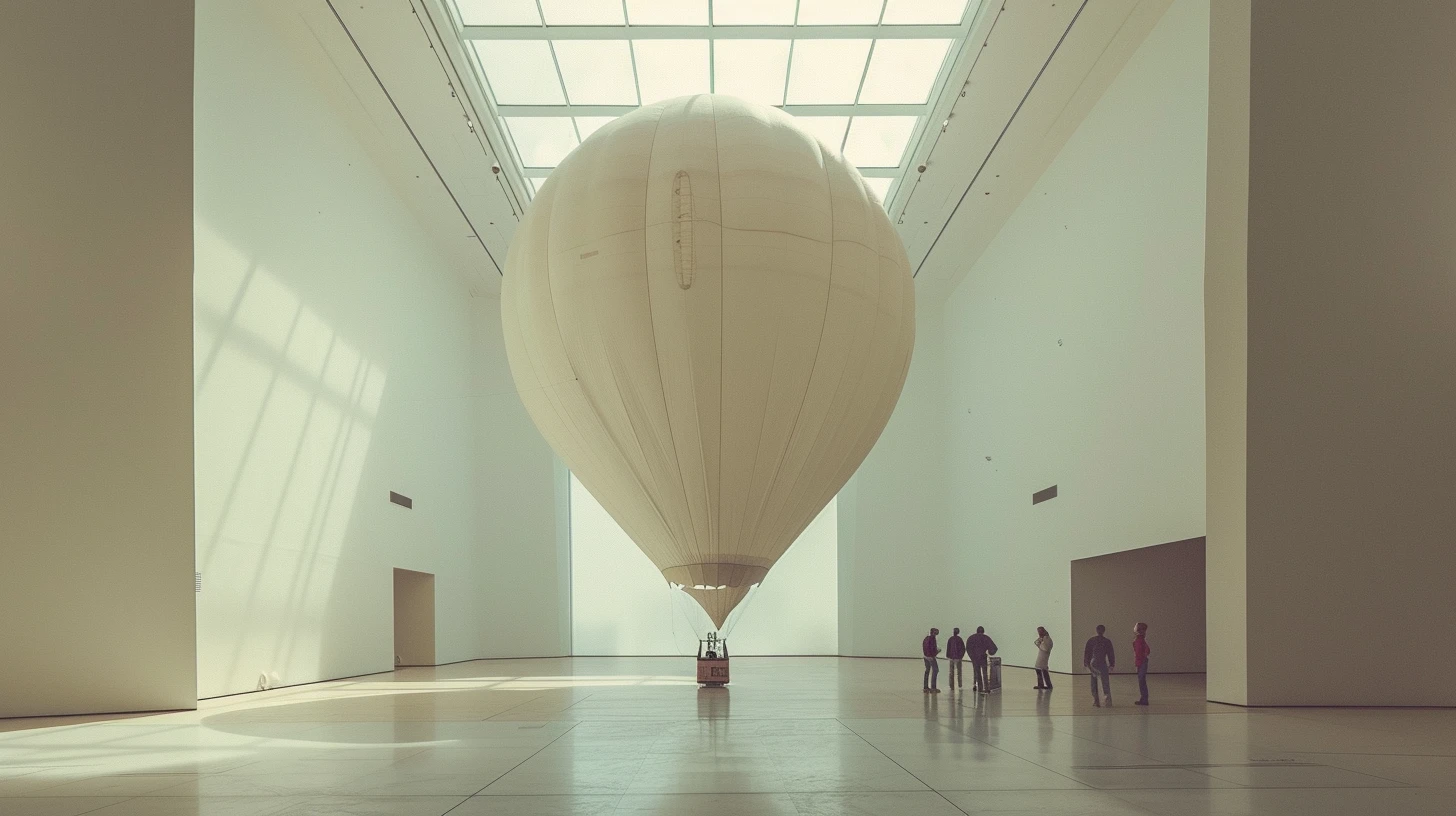.webp)
© History Oasis
The Breitling Orbiter project, a collaboration between Swiss watchmaker Breitling and British balloon manufacturer Cameron Balloons, aimed to achieve the first non-stop circumnavigation of the globe by balloon.
After two unsuccessful attempts, the third balloon in the series, Breitling Orbiter 3, piloted by Bertrand Piccard and Brian Jones, embarked on its historic journey on March 1, 1999.

The Breitling Orbiter project was a collaborative effort between the Swiss watchmaker Breitling and the British balloon manufacturer Cameron Balloons, based in Bristol, England.
The aim of the project was to create a balloon capable of circumnavigating the globe without stopping, a feat that had never been achieved before.
The Breitling Orbiter series consisted of three Rozière balloons, combining the characteristics of both hot-air and gas balloons, with each successive model building upon the lessons learned from its predecessors.

On March 1, 1999, the Breitling Orbiter 3, piloted by Swiss psychiatrist and aeronaut Bertrand Piccard and British balloon pilot Brian Jones, embarked on a historic journey from Château-d'Oex, Switzerland.
After nearly 20 days in the air, covering a distance of 25,361 miles (40,814 kilometers), the duo successfully landed in the Egyptian desert on March 21, 1999, becoming the first people to circumnavigate the globe in a balloon without stopping.

The Breitling Orbiter 3 was a massive balloon, standing an impressive 180 feet (55 meters) tall when fully inflated.
The balloon utilized a unique Rozière design, which combined the lifting capabilities of both helium and hot air to achieve the necessary altitude and endurance for the record-breaking flight.
This innovative combination allowed the pilots to adjust the balloon's altitude by regulating the temperature of the air inside the envelope, while the helium provided a constant lifting force, enabling the Breitling Orbiter 3 to reach heights of up to 38,507 feet (11,737 meters) during its journey around the world.

The gondola of the Breitling Orbiter 3 was a technological marvel, designed to provide a safe and comfortable environment for the pilots during their long-duration flight at high altitudes.
Constructed from a durable and lightweight weave of Kevlar and carbon fiber materials, the gondola was built to withstand the rigors of the journey while minimizing weight.
To ensure the well-being of the pilots, the gondola was pressurized, allowing them to maintain a comfortable atmosphere even at altitudes where the air is thin and oxygen levels are low, thus enabling them to focus on navigating and controlling the balloon throughout their record-setting circumnavigation.

The pilots of the Breitling Orbiter 3, Bertrand Piccard and Brian Jones, had to endure a grueling routine during their record-breaking flight around the world.
Each pilot took turns controlling the balloon in shifts, spending 8 hours at the helm, followed by 8 hours working alongside their crewmate, and finally, 8 hours of much-needed rest in the gondola's single bunk.
This demanding schedule allowed the pilots to maintain a constant presence at the controls, ensuring the safety and success of the mission, while also providing them with the opportunity to collaborate on navigation and decision-making, as well as to recuperate from the physical and mental strains of the journey.

In a symbolic gesture connecting the historic flight of the Breitling Orbiter 3 to the pioneering spirit of early science fiction, pilots Bertrand Piccard and Brian Jones carried a copy of Jules Verne's "A Life" during their record-breaking circumnavigation.
The book, on loan from Verne's grandson, served as a token of good luck and a tribute to the visionary author who had imagined a similar around-the-world balloon flight in his 1863 novel "Five Weeks in a Balloon."

Despite the presence of heaters designed to maintain a comfortable temperature of 59°F (15°C) inside the gondola, the pilots of the Breitling Orbiter 3 faced extreme temperature fluctuations during their record-setting flight.
On occasion, the temperatures would plummet to such low levels that the drinking water would freeze, creating a challenging and potentially dangerous situation for the pilots.
In addition to the discomfort caused by the freezing temperatures, the pilots had to take on the arduous task of chipping away ice that had formed on the delicate electronic circuitry lining the interior walls of the gondola, ensuring that the vital systems remained operational throughout the journey.

The Breitling Orbiter 3's record for the longest distance unrefueled flight, spanning an impressive 25,360 miles (40,814 kilometers), stood for seven years until it was surpassed by the Virgin Atlantic GlobalFlyer in 2006.
However, the Breitling Orbiter 3 continues to hold the record for the longest duration unrefueled flight, with Piccard and Jones spending an astonishing 19 days, 21 hours, and 47 minutes in the air without landing or refueling.
This remarkable achievement showcases not only the advanced technology and design of the balloon but also the incredible endurance and determination of the pilots who pushed the boundaries of human flight and exploration.

As the Breitling Orbiter 3 approached the end of its historic journey, Piccard and Jones had envisioned a triumphant finale, with plans to land their balloon near the iconic Great Pyramids of Egypt.
However, the unpredictable nature of ballooning and the capricious winds at lower altitudes forced the pilots to deviate from their intended target.
High winds compelled the duo to bring the Breitling Orbiter 3 down in the Egyptian desert, approximately 80 kilometers north of the town of Mut, marking the end of their record-breaking flight in a remote and less ceremonious location than they had originally hoped for.

The gondola of the Breitling Orbiter 3, the vessel that carried pilots Bertrand Piccard and Brian Jones on their historic non-stop circumnavigation of the globe, has found a fitting home in the halls of the National Air and Space Museum in Washington, D.C.
For several years, the gondola was displayed at the museum's main location on the National Mall, sharing the spotlight with other iconic aircraft and spacecraft that have shaped the course of aviation history.
In recent years, the gondola has been relocated to the Udvar-Hazy Center, a companion facility of the National Air and Space Museum located near Dulles International Airport in Virginia, where it continues to inspire and educate visitors about the remarkable achievement of the Breitling Orbiter 3 and its intrepid crew.